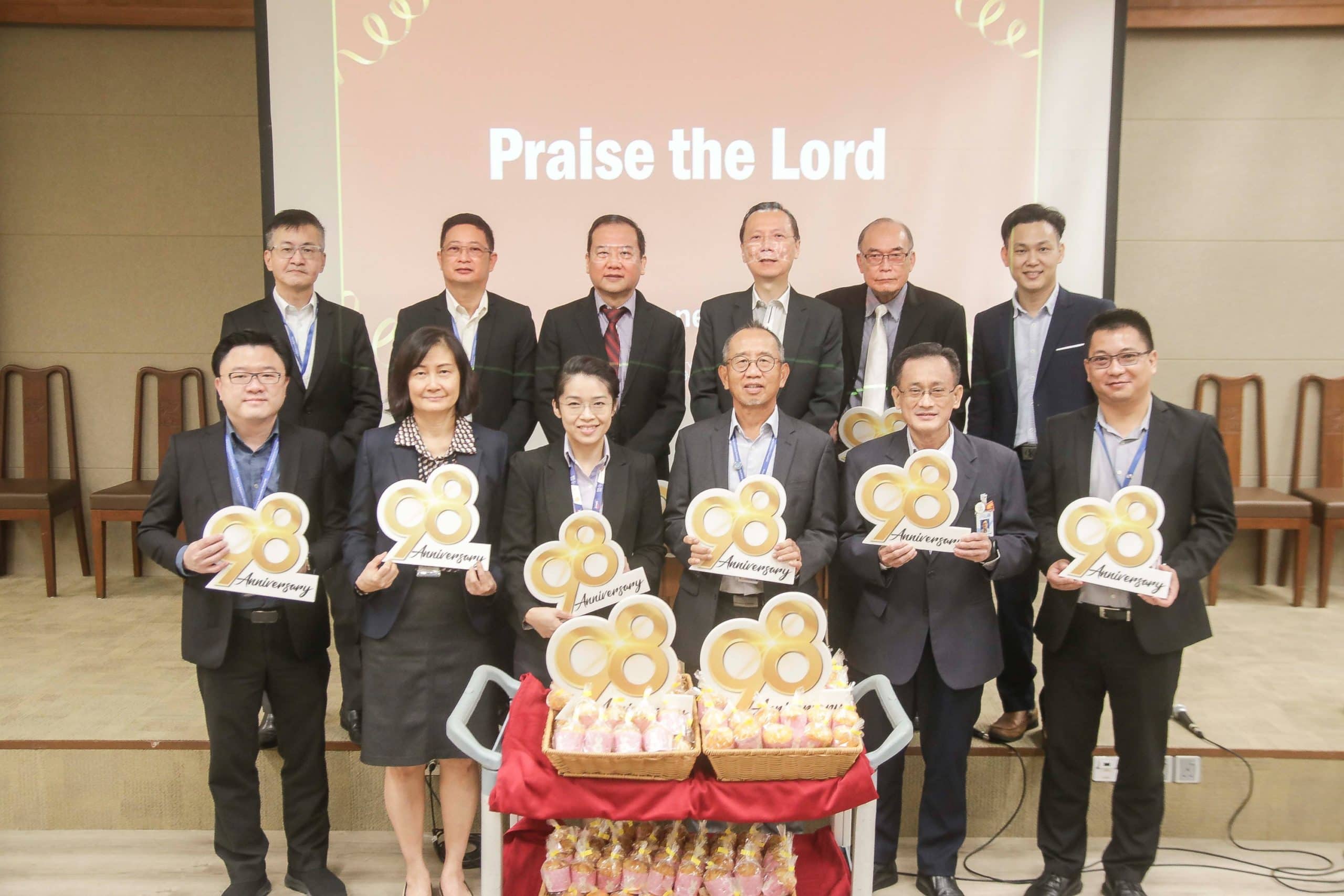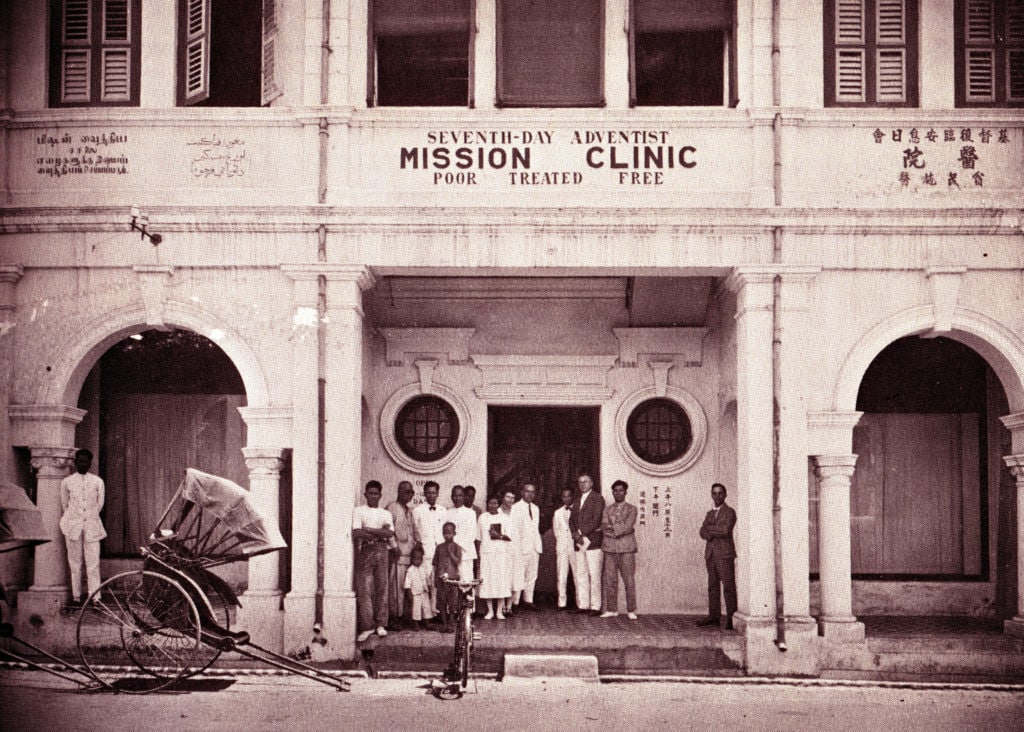
On December 12, 2022, the Penang Adventist Hospital (PAH) — established in 1924 and serving Malaysia for more than nine decades — celebrated its 98th year of existence.
Through the continuous development of medical equipment and the assistance of a committed medical team and personnel that provides the highest quality health-care assistance to its patients, PAH continues to improve its services.
PAH has dedicated itself for 98 years to serving all people with comprehensive, expert, and outstanding health care as an example of the love and healing ministry of Christ. Its goal is to become a patient-centered teaching and learning tertiary health-care facility that adheres to international quality standards and brings recognized Centers of Excellence to the local community.
The hospital’s current president, Ronald Koh, expressed his gratitude for being a part of this historic achievement. According to Koh, the hospital’s success “can only be attributed to God’s leadership and guidance.”
“The hospital has evolved and expanded throughout the years as a premier health-care institution in Malaysia that offers a comprehensive approach to treatment and recovery,” Koh said. “This is because of God’s ministry of healing.”
PAH is known to be a leading cardiac surgery center in Asia. It is also the first private hospital in the northern part of Malaysia to perform micro-vascular, coronary bypass, laser heart surgery (TMR), and open-heart surgery.
“As we celebrate another year of our hospital anniversary, let us be reminded of our mission, to show compassion to the sick and needy by ministering to them and educating our community on the importance of good health,” Abel Bana, president of the Malaysia Union Mission, said. He added, “Friends, you have faithfully served to fulfill the hospital’s mission. Many have been immensely blessed by PAH and [for] the success we give the highest glory to God. Philippians 1:6 says, ‘Being confident of this, that He who began a work in you,’ PAH will carry it on to the completion until the day of Christ Jesus.”
In a congratulatory message, Chief Minister of Penang Yang Amat Berhomat Tuan Chow Koh Yeow expressed his gratitude and appreciation for what the hospital has achieved during its years of existence. “Penang Adventist Hospital is synonymous with ‘Poor Treated Free’ and ‘God Heals, We Help,’ ” Yeow said. “This is very apparent in all the charity and community work you had been doing since the inception of the hospital back in 1924. Throughout the decades, you have shown tremendous growth while catering to the needs of our community; yet stay true to the mission set by your founder by reaching out to the needy in our community. As the Chief Minister of Penang, I am very proud of your achievement and your magnanimous service to our community.”
Going Back to Its Roots
When Earl Gardner and his wife arrived at the Singapore headquarters of the Seventh-day Adventist Church almost 100 years ago, the leaders made the decision to locate a hospital outside of Singapore after careful consideration and planning, because the nation already had an Adventist presence through a school and a Seventh-day Adventist church. Gardner looked into whether it would be feasible to open the hospital in the Malayan Union and other Dutch East Indies provinces. After visiting three Malayan cities, Gardner concluded that Georgetown on Penang Island was the ideal location for the hospital.
The first Seventh-day Adventist clinic in Malaysia was established by Gardner on December 12, 1924, at 108 Muntri Street in Penang, with a large sign outside the clinic that said, “Poor Treated Free.” This was to provide immediate health care to the community, especially those with financial challenges in availing themselves of health services. This free service caught the public’s attention, and eventually, the number of patients coming to the clinic grew bigger daily. To accommodate the rising number of patients at the Mission Clinic, the construction of the hospital at 465 Burmah Road began in 1928.
The newly established hospital was called Penang Sanitarium and Hospital. After it was finished in 1931, it opened its doors to the people of Penang and the states and nations around it. Many Thai patients would come to the hospital during the early years. His Royal Highness Prince Damrong, the uncle of the king of Thailand, and his daughters, Princess Poon and Princess Pillai, would visit the hospital for consultations.
Due to the increasing demand, the clinic at Muntri Street was moved to 511 Chulia Street in 1932 and finally to 422 Chulia Street in 1939. Gardner had to bring his family back to the U.S. in 1936. Leon Harrop took over and quickly established himself as a capable administrator.
Braving World War II
The hospital was seized by the Japanese after they invaded Penang in 1941. The Western wing was rebuilt by the Japanese two years later. The hospital’s name was eventually returned to it after the war, when it was renamed Penang Mission Hospital.
Due to the war’s damage, Gardner and his family returned to Penang to assist in the hospital’s reconstruction. They carried various medical tools and supplies with them, including a station wagon that was eventually transformed into an ambulance. The Chulia Street clinic, on the other hand, was sold due to the war’s catastrophic damage.
After the war, the hospital steadily gained a respectable name in the nation as more patients sought its advice. The leadership of the Penang Sanitarium and Hospital was inspired to offer additional services to better meet the needs of the rising number of patients. The right wing of the hospital was established in 1958, and His Excellency Raja Sir Uda, the governor of Penang, formally opened the new structure.
Modern operating rooms, delivery suites, and first-rate private wards are all products of the construction of the new structure. The maternity suite and neonatal nursery were inaugurated in 1966.

Growing through the Years
Penang Sanitarium and Hospital were renamed Rumah Sakit Advent or the Penang Adventist Hospital in 1967, giving rise to the hospital’s current name. The hospital started to grow in 1970 when new facilities and medical services were added. Along with the advent of laparoscopic surgery came the establishment of the intensive care unit. Later, in 1974, a two-story wing was erected to accommodate a laboratory, the radiology division, and the kitchen. The hospital’s dental clinic opened its doors in 1979.
The Heart Centre was established in 1987 and was the first facility in the northern region to complete a coronary bypass operation successfully. Later, in 1993, the Advent College of Nursing and Health Sciences was founded to promote the hospital's view that nurses play a crucial role in providing hospital services.
A huge demand for the wholemeal bread that the Adventist bakery produces led to the opening of its doors in 1994. The bakery's selection of wholesome goods has grown over time. The Adventist Lifestyle Center was established in 1995, making it the first hospital in the north to offer a special unit that provides patients with holistic health care.
Accreditations and Achievements
PAH was the first private hospital in Malaysia to receive Joint Commission International (JCI) accreditation. Additionally, PAH received accreditation from the Malaysian Society for Quality in Health (MSQH) and was designated as a Baby Friendly Hospital. PAH is also the first hospital in Malaysia to join the Health Promoting Hospital Network (HPH).
Today and Forward
The institution has grown to become a tertiary health-care institution offering the best quality of health-care services centered in Jesus’ ministry of healing, leaders said. Remaining true to its roots as a non-for-profit hospital, PAH continues to carry out charitable work via its medical welfare program and funds to assist those in need.
The Seventh-day Adventist health institution belongs to an international network of more than 500 hospitals, clinics, and dispensaries worldwide operating under the Adventist Health Network. PAH is also dedicated to offering a holistic lifestyle approach to helping patients achieve their journey to full recovery.
The original version of this story was posted on the Southern Asia-Pacific Division news site.